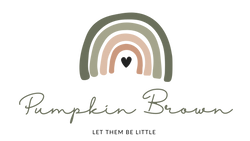Lets talk about Wool..
So, you’ve just got your head around cloth nappies, PUL, the various acronyms, and you spot someone chatting about using a wool cover over their nappies…how does that even work?
Firstly, it’s not as strange as it sounds. Wool is an INCREDIBLE material, and its features make it particularly well suited to cloth nappies:
- It’s a natural material, so unless your babe has an allergy to wool, it’s a lovely fabric against the skin
- Once treated with Lanolin (a waxy substance derived from sheep’s wool), it’s both water resistant whilst still being absorbent. Lanolin is permeable to oxygen, so can “breathe”. I know right?! Magic.
- It doesn’t need much regular care at all, something we will go in to further down this article
- It keeps skin cool in summer and warm in winter (again, magic right?!)
- When your baby’s urine is absorbed by the wool, it mixes with the lanolin to create lanolin soap. Lanolin soap is a natural antibacterial, and great for baby’s skin
- It can absorb huge amounts of moisture before feeling wet, a whopping 30% of its weight!
We’re not talking the kind of wool your Granny would use to knit you a jumper as a kid, man they were itchy! Most wool covers are made using Merino wool which is known for being particularly soft. The fibres are also processed in a way that removes the “itchy” element.
So, how do you use a wool cover? Here are some general rules:
- Wool covers are designed to go over a fitted nappy – one that doesn’t have a PUL outer, as the wool is acting as the cover in place of PUL
- You’ll want 2-3 covers. They take a few days to dry once washed and lanolised, so you need another ready to go in the meantime.
- Always handwash, never put in hot water – wool is magical, but it’s not immortal and heat will shrink your cover. * TIP* Use your bebes bath thermometer to make sure water stays under 30 degrees
- Wash your wool using wool soap ideally; bio washing powders can damage/strip wool fibres, and a good wool soap will make sure you don’t wash away all of the lanolin coating, which will reduce the amount of lanolin needed to treat your wool
- There’s a lot of different opinions on how often to wash your wool. Generally speaking, you can do whatever works for you! You’ll notice your wool smells of urine when you initially take it off, but leave it hanging somewhere to airdry and come evening the smell will be gone. If the smell still lingers, or you notice you are getting leaks, then it’s time to wash and re-lanolise. This can be anywhere from 2-6 weeks! And you can use a wool maintenance spray in between washing and re-lanolising to help prolong wear
In simple terms, washing and lanolising your cover involves giving it a good smoosh and squeeze in lukewarm water mixed with wool soap, wringing it out, then lanolising. To lanolise, you melt lanolin in a mug/jug with boiling water. Stir until the lanolin has liquefied, then you add a few drops of baby shampoo (or any other liquid soap) until the solution turns milky; this is called “emulsification”, and it essentially means the lanolin fats have broken down into small enough particles to be suspended in the water and absorbed by your wool. This solution is added to a bowl containing lukewarm water and your wool is added and left to soak (with the odd squish). It’s then wrung out and laid flat to dry – simple! You’ll have wonderfully soft hands afterwards, too.
For a video showing exactly how to wash and lanolise your new wool cover, head over to Facebook and join The Pumpkin Patch.
Wool covers can be used day or night, and because of the nature of wool you’ll find your nappies far drier come change time when compared to using a PUL cover.
Ready to give wool a go?
Here are our recommendations to get you started,

